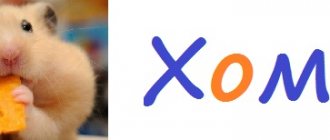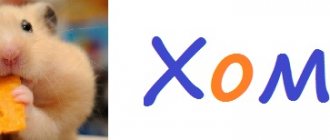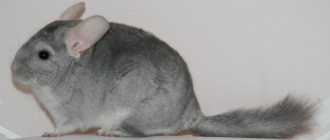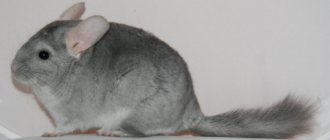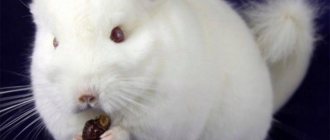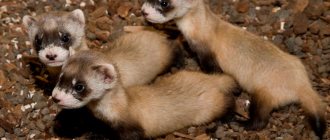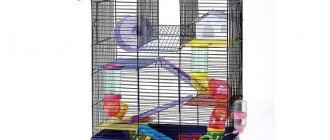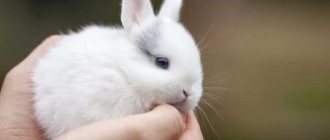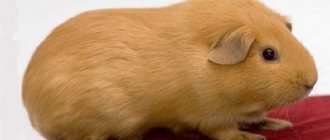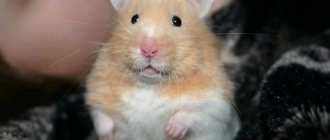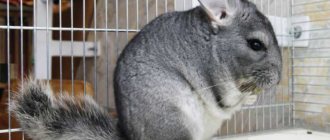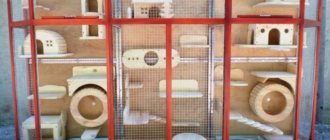Gray standard (Standart)
The gray chinchilla is one of the most common species. This is explained by the fact that this color is natural. The Incas began breeding rodents of exactly this color many centuries ago. They called them "chincha", which means "bug". All other colors were developed artificially much later.
Their belly is white, and the rest of the fur is grayish, with a smooth transition from light to darker. There are:
- Light.
- Average.
- Dark standard.
The gene responsible for this coloration is called agoti. It is thanks to him that the smooth play of fur is created. It ensures the presence of pigment granules in certain areas, so each hair has a black or bluish lower part, a snow-white middle part, and a black tip.
Gray individuals are larger and stronger than others and reach maturity early. This color is a simple dominant one; crossing gray individuals with any others is allowed.
Color options
In the wild, animals have many enemies. An inconspicuous and dim grayish fur coat is one of the shields. Rodents are less noticeable against the background of rocks.
Since people became interested in animals, white, black and beige breeds have been brought into the world. The result of many years of breeding research is rare colors. Today it is difficult to imagine that nature originally endowed this fluffy with only one color.
The entire palette of fur coats can be divided into the following groups:
- gray or agouti, which are considered standard;
- white with varying saturation or an admixture of pink, beige;
- brown or pastel, available in all colors, including chocolate;
- black with varying degrees of saturation;
- original fur coats in purple, sapphire and pink colors.
Animal colors are:
- Dominant, which are visible from birth.
- Recessive, when the rodent is only a carrier of the gene that is responsible for a certain fur color.
For breeding work, it is important to know what recessive color a rodent has.
Standard gray
Gray chinchillas exist in nature and in captivity.
There is a division by shade and depth:
- light;
- average;
- dark;
- moderately dark;
- extra dark.
This is the native color of wild chinchillas and their ancestors. Darker color on the back. The sides are light, the belly is snow-white. Color distribution on the hair: from gray-blue at the base to black at the crown.
What distinguishes individuals with gray colors is their health. They begin to bear offspring early. You can cross with any subspecies. The fur is pleasant and soft to the touch.
Light
A light gray fur coat with a silver tint looks very impressive. In such animals you can see a light shirt-front, abdomen, and paws.
Average
It is considered the typical and most common color. The body is a uniform gray color, lighter on the belly, chest and paws.
Dark
Gray fur with a blue tint and lighter coloring on the belly and chest makes rodents stand out from the general gray mass.
Moderately dark
Such animals have a dark gray coat that turns into spectacular ash on the paws, face and sides. Their belly is bluish-white.
Extra dark
Many fans have charcoal-gray chinchillas with light sides and chest. Their bellies are light beige.
Breeds with white fur
White chinchillas look elegant and representative. They have their own nuances.
White Wilson
Rodents, which are called white Wilson, are “dressed” in a white coat with possible admixtures of grayish or beige colors:
- Silver mosaic. The animal has a white fur coat with a silvery tint and dark fur on the head and base of the tail.
- Light mosaic. Rodents have light gray spots on a pure white coat. The scruff and ears are dark gray.
White chinchillas are not uncommon in nurseries. Breeders are willing to raise it, the color is in demand
Albino
Animals are not identified as a separate breed. An albino is an animal that lacks color pigment at the genetic level. Has milky fur and red eyes.
White Lova
A representative of an interesting variety of chinchillas is the White Lova. He has a white coat with a cream tint. Beautiful eyes the color of dark ruby.
White velvet
Rodents are carriers of a pleasant light velvet coat, which can be beige or silver. It is distinguished by expressive gray spots on the front legs and head.
White-pink
The milky coat of the rodent, which has black eyes and pinkish ears, produces a stunning effect. An individual with a pink back looks even more interesting.
Violet
Violet is a very beautiful rodent, the species carries a white gene and two purple ones. Often confused with Wilson White, but the main difference is in the coloring of the spots; Wilson’s are gray.
In normal light, the fur coat of these individuals has a purple tint, which imparts a special charm due to its sparkle. Under artificial light it becomes steel gray. The belly, like the standards, is snow-white. There are White and Gray Violet. The first may have various purple spots on the fur, their shade most noticeable at the tip of the tail.
The quality of the coloring is characterized by an even, bright rosette, which is ensured by the color of the base of the hairs in a gray-violet color, the light middle part and the tip from light purple to bright purple. The color intensity of an adult animal’s coat can be determined at birth, and the final color appears by the seventh or eighth month.
When choosing a pair for your purple pet, consider the following recommendations:
- to get a beautiful pet, choose light standards;
- the purple gene is passed on in both the first and second generations;
- due to the recessivity of violet, when crossed with non-violet, the offspring will only be a carrier.
Animals with purple fur reach maturity late. But despite the ability to reproduce only after 14-18 months, such animals are very popular.
Pink White
White-pink is a very beautiful color that carries three genes:
- White.
- Beige.
- Standard.
And it is the first gene that is responsible for the manifestation of mosaic pattern: gray-brown spots on the surface of the fur. Sometimes there are beige individuals with whitish spots or stripes. The ears of white-pink individuals are pinkish, sometimes there are freckles, and the eyes are bright or dark red.
Due to the presence of a lethal gene, such animals cannot be paired. With the exception of this feature, otherwise such individuals will be excellent partners for rodents with other coat colors.
Homo beige and Tower beige
Both homobeige and heterobeige are mutations of beige animals, the photo clearly demonstrates the difference between these rodents. Their common property is heterozygosity and dominance of the allele. The eyes of these animals are bright red or pink, and their light pink ears have beige or dark freckles.
The heterobeige chinchilla, the photo of which was posted first, has a coat of cream, beige, light or dark chocolate, and the animal’s belly is snow-white. The undercoat is grayish with a blue tint, with variations from light to dark, so in artificial light the coat may appear beige or bluish. It is noteworthy that yellowness degrades the quality of the breed. A feature of heterobeige rodents is the obligatory color boundary between the tummy and the rest of the body.
Homobeige individuals have light beige or cream fur and a whitish undercoat. The fur does not have shade zoning, it is evenly colored, and occasionally there may be hairs with slightly darker tips.
There are no restrictions on pairing beige chinchillas with others.
Which breed is better to choose?
There are no clear recommendations regarding which breed of chinchilla is best to choose. This comes down to personal preference:
- lovers of furry pets should prefer the Angora breed;
- those who prefer miniature animals will like dwarf chinchillas;
- breeders who are crazy about rare exclusive breeds should pay attention to the violet, blue or pink diamond;
- Ebony chinchillas are ideal for professional breeders attending exhibitions;
- For those who do not want to spend money on purchasing a rare breed pet, it is better to pay attention to the standard.
The main thing to consider when choosing is the health of the animal. And both physical and psychological. If the animal is active, shows curiosity, has shiny fur without bald spots, everything is fine.
If the fluffy hid in the corner of the cage, or, conversely, shows aggression, it is better to go shopping to another nursery. Signs such as runny nose and eyes, dull fur, bad breath, and rotten teeth may also indicate an animal’s illness.
Regardless of the breed, any chinchilla needs the care and love of its owner. Only by feeling the warm attitude of the owner and living in good conditions, the pet will feel comfortable and confident. And most importantly, he will reciprocate the owner’s gratitude.
Black Velvet
The black chinchilla, the photo of which you see above, is a very beautiful and unusual animal. The species was developed in the early 1960s, as was the Wilson White. The darker the fur of the animal, the higher the quality of the breed. A distinctive feature of the fur coat is light stripes on the paws, a charcoal mask on the “face”, darkened by fur on the head. The completeness of the coloring appears as they grow older. Unfortunately, the velvet gene is lethal, so such animals cannot be crossed with each other. What is noteworthy is that the size of the muzzle and ears of such rodents is directly related to the length of the tail. And velvet is not just the color of a fur coat, but the structure of the wool itself.
Black velvet carries two genes:
- standard;
- black velvet.
That is, when crossing them with standard agoutis, with a 50/50 probability, both gray and black puppies can be born.
Main differences between the species
In total, there are 2 types of chinchillas found in nature - short-tailed and long-tailed. They have absolutely the same habits and character. And they differ only in appearance:
- The long-tailed chinchilla is characterized by higher fertility. It is found in Chile, in the mountain ranges located on the Pacific coast. It is further divided into 2 subspecies – mountain and coastal. Mountain animals live exclusively on rocks, at an altitude of 3-5 thousand meters above sea level. Coastal ones do not rise above 2 thousand meters.
- The habitat of the short-tailed chinchilla is Chile, Argentina, Bolivia. They live only high in the mountains. Therefore, they have thicker, dense fur, which is why they are on the verge of extinction. They also differ from their long-tailed relatives in their stocky body, short neck and strong head. It is very rare to encounter a short-tailed chinchilla in its natural habitat.
All other species were bred artificially using breeding work with long-tailed chinchillas. The result is about 100 breeds, which differ mainly in color. And only 2 varieties have several more distinctive features:
- Angora chinchilla . It differs from all other species in its fluffy long fur and spreading tail. It also has a slightly flattened muzzle. The most expensive breed, since the necessary characteristics are not always inherited during breeding. And only experienced breeders are able to produce long-haired babies.
- Dwarf chinchilla . The main difference is the size. If ordinary chinchillas weigh 600-800 g, then dwarf chinchillas weigh 300-400 g. Otherwise, they are similar to the rest of their relatives.
It is worth noting that dwarfism is not the result of the work of breeders, but a natural mutation. Accordingly, the cubs of such chinchillas are born of normal sizes. As a result, dwarf females often die during childbirth. Therefore, these babies are absolutely not suitable for breeding.
Other colors
In addition to the above, there are other colors of chinchillas, photos of which you can see below. They are recessive, so such individuals are rare and highly prized. These include:
- sapphire;
- albino;
- foggy;
- charcoal.
The fur of those with the Sapphire color is gray, but has a pronounced blue tint, and the animal’s belly is white. The peculiarity of such animals is that their coats remain colored throughout their lives; they do not darken with age.
Albinos lack any pigment, so their fur is snow-white, without mosaic spots or transitions, and their eyes are red.
Rodents with a foggy (hazy) color have a gray coat on which a blurred pattern can be distinguished; it can be a tone lighter or darker than the main one. The animal's eyes are dark.
Lifestyle
The biology of chinchillas in natural habitats has been little studied; basic data on behavior, reproduction, and physiology are obtained in artificial conditions. Most of the data relates to long-tailed chinchillas due to their mass breeding in captivity.
A highly developed cerebellum provides good coordination of movements necessary for safe movement on rocks.
Chinchillas are herbivores. Their diet is based on various herbaceous plants, mainly cereals, as well as seeds, mosses, lichens, shrubs, tree bark, and small insects. In captivity, they eat only dried foods (such as dried apples, carrots, hay, nettles and dandelion roots), granules as the main food.
Chinchillas make very interesting sounds: when they don’t like something, they make a sound similar to a quack or chirp. If you make them very angry, they begin to make sounds similar to growling or blowing their nose, and sometimes click their teeth very quickly. If they get hit hard or get very scared, they can squeak very loudly. But chinchillas are not defenseless - when threatened, they can attack: they stand high on their hind legs, begin to “growl”, release a stream of urine, and then cling with their teeth.
Crossing chinchillas
The variety of chinchilla colors provides ample opportunities for breeders. This process is very exciting, because there is always the possibility of manifestation of one of the recessive genes carried by animals.
The only restriction is the ban on combining two lethal genes - white and black. This leads to the death of babies soon after birth. The female may also die without being resolved.
Usually, when selling animals, breeders provide a rodent passport, which indicates which genes the animal is a carrier of. Using the color calculator, you can calculate what kind of offspring your pets will have.
